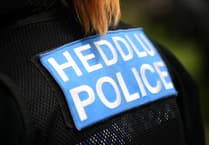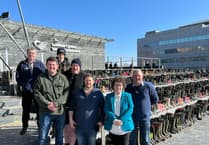TWENTY-FIVE years ago Kuwait was invaded by Iraq.
At the time I was a sergeant serving in the 1st Battalion The Royal Welch Fusiliers in Berlin. Before the collapse of the Berlin Wall, the battalion had experienced a two-year difficult and demanding residential operational tour of Ballykinler, Northern Ireland. Ireland in the ’80s was a very dangerous place.
In the summer of 1989 the battalion moved to Berlin. I was glad to cross the Ballykinler finishing line as the past six months had been physically and mentally draining.
November that year the battalion witnessed first-hand the historical fall of the Berlin Wall and, six months later, I was posted to Werl in West Germany as part of the Divisional Armoured Infantry Training Team.
Tension gathered with the ever-increasing certainty of war.
I was informed by the Adjutant in Werl that I was to be posted to 2 Platoon, A Company, 3rd Battalion The Royal Regiment of Fusiliers (3RRF). I was going to war. Throughout the next six weeks I prepared for war within 3 RRF battle group. Long, exhausting days live-firing and testing all weapon systems, rehearsing our battle skills, preparing all the vehicles and equipment for deployment, intelligence briefs, enemy and equipment recognition and not forgetting chemical warfare training. I flew out with the advance party on Boxing Day, 26 December, 1990.
altAfter a long flight we arrived at King Fahd International Airport, Riyadh, in Saudi Arabia. From there we travelled east to Al Jubayl, the main shipping port and the rear staging point for the Allied deployment. Our role as the advance party was to prepare and off-load all the vehicles and equipment in preparation of the arrival and then deployment of the main body, enabling A Company’s troops to arrive and then deploy into the dessert within 24 hours. This was to be a demanding week, constantly working against the clock in an uncomfortable climate - we had just departed from a very cold winter in Germany for the intense heat of the Persian Gulf.
The port was a mass of Allied troops, mainly Americans, and on New Year’s Eve 1990, A Companies 3RRF main body arrived.
On 1 January, 1991 we deployed as planned into the dessert of Saudi Arabia.
A Company had been tasked with point right Company and I had been tasked with commanding the forward right vehicle for 3RRF Battle groups advance. The unknown plays tricks with your mind and the prospect of leading the battle groups advance and of being one of the first offered enemy targets was a little uncomfortable.
However, as a commander of men you must always remain positive.
The evening of 25 February 1991, US forces breached into Iraq. They encountered some resistance from the Iraqis and it was agreed that the British ground troops would leapfrog past the US forces and continue the advance. We would remain in pole position throughout.
Our first major contact was an assault against an Iraqi Artillery position; it was a wet and misty bleak morning.
Visibility was poor and limited our view of fire. We formed up and awaited the order to advance, our aim was to push forward onto the position and engage, destroy and clear the enemy position. As we raced down onto the enemy position I remember the reaction from the fighting troops in the back as the pings from the small arms fire struck our vehicle and the constant ask of “what’s happening” over the intercom. I was so relieved that I was in the commander’s seat and not sat helplessly in the back of the vehicles.
Once onto and over the trench positions I took charge in winning the fire fight and, with a mixture of weighted 30mm heat rounds and 7.62mm tracer, soon tamed the enemy.
To the relief of the troops in the back of the vehicle, the order was given to de-bus and the back doors opened and ground troops deployed. After about 30 minutes, our first objective had been taken and we regrouped and moved in support of the next Companies’ battle groups assault.




